
Privacy statement: Your privacy is very important to Us. Our company promises not to disclose your personal information to any external company with out your explicit permission.
![]() July 10, 2020
July 10, 2020
Knowledge sharing by Guangdong Shunde Teamwork Model Technology Co., Ltd, whom with over 20 years rapid prototyping experience.
Email: ken@gdtwmx.com
Website: www.gdtwmx.com
When it comes to manufacturing in recent years, 3D Printing, 3D printing, 3D printing, rapid prototyping, rapid manufacturing, digital manufacturing, etc. are all hot words. These nouns, like the same whirlwind, seem to have set off giants in academia, politics, media, finance, and manufacturing circles overnight. However, how much do you understand these concepts? If you are not sure, there is an article here that can comprehensively and completely analyze these nouns so that people can truly understand and understand "what is 3D printing" and "what is rapid manufacturing."

Rapid Prototyping (RP), born in the late 1980s, is a new technology based on material stacking and is considered to be a major achievement in the manufacturing field in the past 20 years. It combines mechanical engineering, CAD, reverse engineering technology, layered manufacturing technology, numerical control technology, material science, and laser technology. It can automatically, directly, quickly and accurately transform design ideas into functional prototypes or directly manufactured parts. This provides an efficient and low-cost means of achieving prototyping and verification of new design ideas. At present, the domestic media industry is accustomed to calling rapid prototyping technology "3D printing" or "3D printing", which is more vivid, but in fact, "3D printing" or "3D printing" is only a branch of rapid prototyping, which can only represent part of the rapid Molding.
Rapid Manufacturing (RM), which has narrow and broad sense, is a new manufacturing concept based on laser powder sintering rapid prototyping technology. It is actually a branch of RP rapid prototyping technology. It refers to electronic data. Fast, flexible and less costly manufacturing methods are performed directly and automatically. Rapid manufacturing Compared with general rapid prototyping technology, it can directly produce the final product, which can adapt to the individual product manufacturing from single product manufacturing to batch; in a broad sense, RM rapid manufacturing can include “quick mold” technology and CNC. CNC Machining technology, so it can compete with RP rapid prototyping technology, each winning the field.
Internationally, "Additive Manufacturing" (AM for short) is used to cover RP and RM technologies, and domestic translations are incremental manufacturing, additive manufacturing or additive manufacturing. In 2009, ASTM established the F42 committee, which defined AM as: "Process of joining mat-erials to make objects from 3d model data, usua-lly layer upon layer, as opposed to subtractive manufacturing methodologies." The material processing method is completely opposite. By adding materials and based on the 3D CAD model data, the manufacturing method of the 3D physical solid model which is completely consistent with the corresponding mathematical model is directly manufactured by the layer-by-layer manufacturing method.
The technology uses a photosensitive resin as a raw material, and the ultraviolet laser under computer control scans the liquid resin according to the contour of each layered section of the predetermined part, and then photopolymerization is generated by the thin layer of the resin in the scanning area, thereby forming a part. A thin section. When the layer is cured, move the workbench and apply a new layer of liquid resin to the surface of the previously cured resin for the next layer of scanning and curing. The newly cured layer is firmly bonded to the previous layer and is repeated until the entire part is prototyped. 3DSYSTEMS is the first company to introduce this technology. The technical feature is high precision and smoothness, but the materials are brittle, the running cost is too high, the post-processing is complicated, and the requirements for the operators are high. Suitable for verifying the assembly design process.
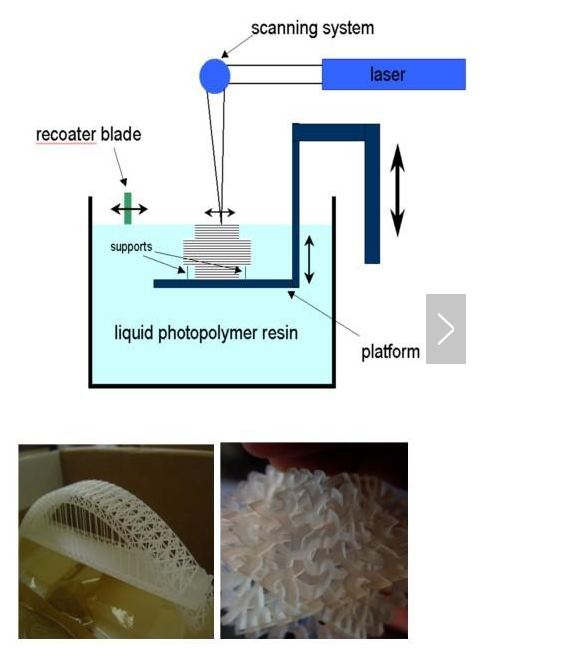
Its biggest feature is miniaturization and easy operation, and it is mostly used in business, office, scientific research and personal studio environments. According to different printing methods, 3DP 3D printing technology can be divided into hot explosion type 3D printing (representative: Zprinter series of 3D Systems, USA - formerly ZCorporation, acquired by 3D Systems), piezoelectric 3D printing (Representative: ProJet series from 3D Systems, USA and 3D printing equipment from Objet, which was acquired by Stratasys recently), DLP projection 3D printing (representing: Ultravision, Perfactory series from Envisiontec, Germany).
The principle of the hot explosion type three-dimensional printing process is to send a certain amount of powder from the storage bucket, and then use the roller to lay the powder on the processing platform with a thin layer of raw material. The print head is sliced according to the 3D computer model. The layer information is sprayed out of the station to stick the powder. After finishing one layer, the processing platform automatically drops a little, the storage bucket rises a little, the scraper pushes the powder from the raised storage bucket to the working platform and flattens the powder, so that the desired shape can be obtained by circulating. The technology is characterized by high speed (6 times that of other processes) and low cost (1/6 of other processes). The disadvantage is lower accuracy and surface finish. The Zprinter Series is the world's only 3D printing device capable of printing full color parts.

Piezoelectric three-dimensional printing, similar to traditional two-dimensional inkjet printing, can print ultra-high-resolution samples for rapid prototyping of small and delicate parts. Relative to SLA, equipment maintenance is simpler; surface quality is good, Z-axis precision is high.
The forming principle of the DLP projection type three-dimensional printing process is to form the photosensitive resin by direct light forming technology (DLPR), the CAD data is layered and supported by computer software, and then the black and white Bitmap file is output. The Bitmap file for each layer is projected onto the workbench by the DLPR projector to cure it. Advantages of DLP Projection 3D Printing: Using the software that comes with the machine from the factory, you can automatically generate support structures and print out perfect 3D parts. Compared to other equipment in the rapid prototyping field, the unique voxelisation patented technology guarantees the precision and surface finish of the molded product.
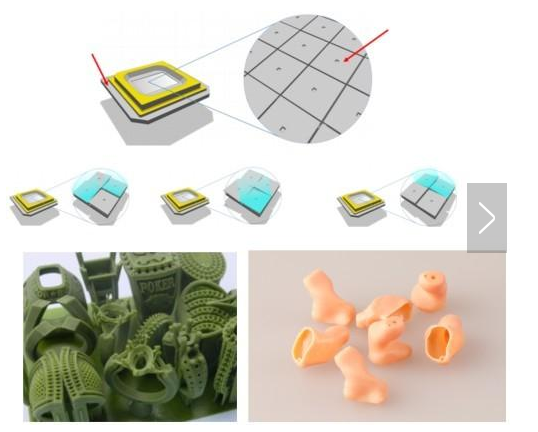
The FDM process, also known as extrusion molding, is about keeping the semi-flow molding material just above the melting point (usually controlled at about 10 °C above the melting point). The FDM nozzle is controlled by CAD layered data to make the semi-flow fuse material (the diameter of the wire is 1.5mm or more) extruded from the boring head, solidified to form a thin layer of contour shape, and a layer is layered to form the entire part. model. The BFB series and Rapman series products of 3DSYSTEMS Company of the United States all adopt FDM technology. The process features are directly made of engineering materials such as ABS and PC, which are suitable for different stages of design. The disadvantage is that the surface finish is poor.

Melt extrusion of 3D printer samples
The method uses a CO2 laser as an energy source, and most of the currently used modeling materials are various powder materials. A thin layer of (100μ-200μ) powder is evenly spread on the workbench. The laser beam is selectively sintered according to the layered profile of the part under computer control, and the next layer is sintered after the layer is completed. After all the sintering is completed, the excess powder is removed, and then the parts are obtained by grinding, drying, and the like. At present, the process materials are nylon powder and plastic powder, and metal powder is used for sintering. Germany's EOS P-series plastic molding machine and M-series metal forming machine products are the best SLS technology equipment in the world.
SLS technology can be classified both in the form of rapid prototyping and in the field of rapid manufacturing, because the final product can be manufactured directly and quickly using SLS technology.
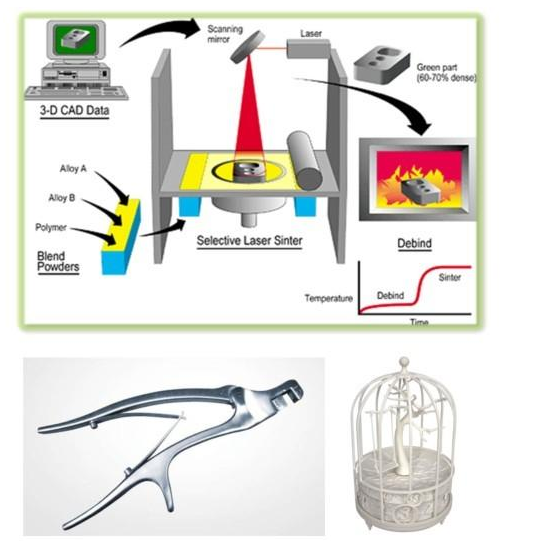
It is equivalent to multi-layer laser cladding. It uses laser or other energy source to synchronously melt the material when it is output from the nozzle. After solidification, it forms a solid layer and stacks layer by layer to form a three-dimensional solid part. DED has a low molding accuracy, but the molding space is not limited, so it is often used to make blanks for large metal parts.
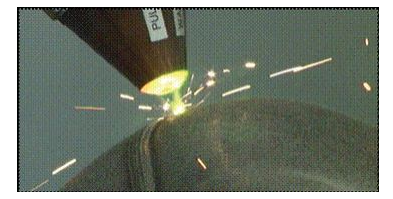
The basic principle: use a laser and other tools to cut and stack thin sheet materials layer by layer, and finally form a three-dimensional entity. Wood grained parts, plastic parts and metal parts can be separately produced from cardboard, plastic sheets and metal sheets. The bonding between the various layers of paperboard or plastic sheets is usually achieved by means of an adhesive, and the direct combination of the individual layers of the metal sheets is usually achieved by welding (such as heat brazing, fusion welding or ultrasonic welding) and bolting. The biggest drawback: not too complicated parts, the material range is very narrow, the thickness of each layer is not adjustable, and the precision is limited.
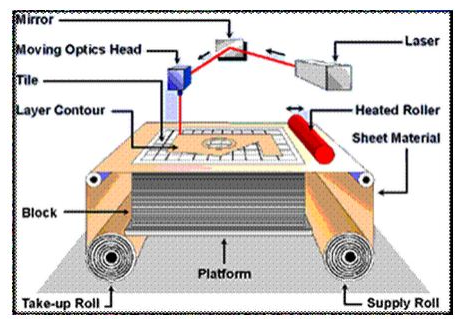
With the SLS equipment, it is possible to directly manufacture the profiled hot runner system of metal molds and injection molds. The hardness can reach higher Rockwell hardness, the performance can reach the level of forgings, and special and complex functional parts can be directly manufactured. It is precisely because of the small batch of special and complex functional parts of SLS technology that it can be manufactured in one time, and it can realize multi-variety and individualized small batch rapid manufacturing, making this technology in aerospace, military, Automobile engine testing and development, medical field has been widely recognized and applied.
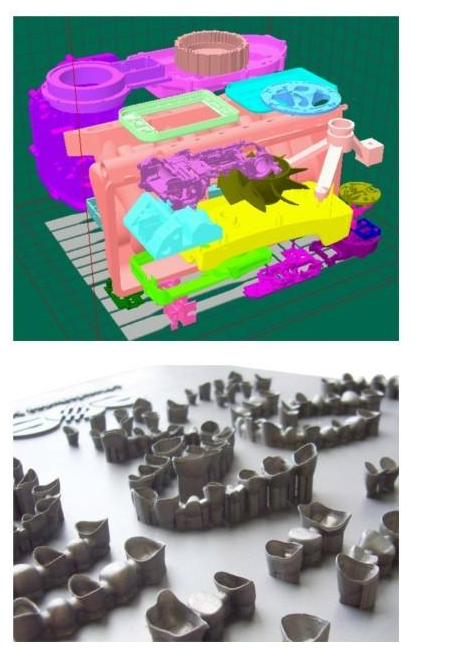
Also called “vacuum injection type complex mold”, that is, using the original sample plate, a silicone mold is fabricated under vacuum, and the PU material is poured under vacuum to clone the same copy as the original sample. The most commonly used rapid tooling technology, through which it is possible to produce products of similar engineering plastics that meet various functional characteristics, while being able to be produced in small batches.
Generally, a set of VCM silicone molds can replicate 20 sets of products, especially suitable for the replication of small and medium-sized parts, such as instrumentation and auto parts manufacturing. This processing technology can meet the application in the trial production process of the product, with short time, low cost and high speed.
The general process is: 3DP/SLA rapid prototyping (hand board, prototype) ----VCM vacuum Injection Molding machine (quick mold making) ------ small batch copying, production
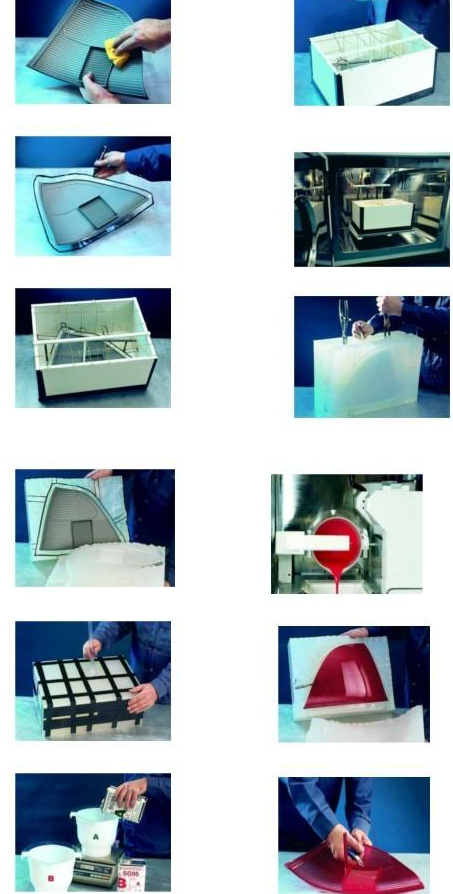
Also known as "Low Pressure Perfusion", it is a new process for the production of rapid moldings. It is a mixture of two-component polyurethane materials, which are injected into a rapid mold under normal temperature and low pressure environment, through polymerization, cross-linking, Chemical and physical processes such as curing form articles. Since the raw material used is liquid, it can quickly fill the cavity with less pressure, so the clamping force and mold cost are reduced, and it is especially suitable for producing large-size, large-area parts, such as automobile bumpers, instrument panels, tails, etc. . A set of RIM molds can replicate 200 products, which have been applied in the fields of automobile R&D trial production, instrumentation, sculpture creation, and architectural design.
The general process is: SLS / CNC rapid prototyping (hand, prototype) ------ RIM rapid mold production ------ injection molding (small batch copy, production)
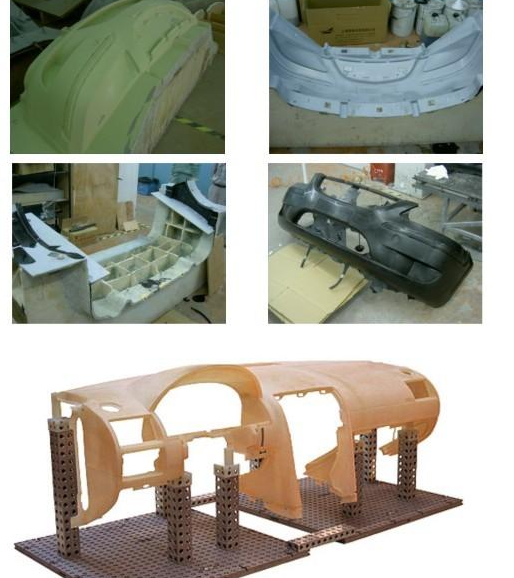
The CNC is an automated machine tool controlled by a program. The control system can logically process a program having a control code or other symbol command specification, and decode it by a computer, thereby causing the machine tool to perform a prescribed action, and the blank material is processed into a semi-finished finished part by tool cutting. Since the development of the world's first Cnc Machine tool by the Massachusetts Institute of Technology in 1952, CNC machine tools have been widely used in the manufacturing industry, especially in the automotive, aerospace, and military industries. CNC technology is both in hardware and software. , there are rapid developments. (from Baidu Encyclopedia)
Compared with traditional machine tools, CNC has the characteristics of digitization, high efficiency and batchization. In addition to the complicated structure of the workpiece, it can basically cope with it. Therefore, although it is not a rapid prototyping technology in the strict sense, the industry usually classifies it as fast. The scope of manufacturing.
At the end of 2011 and April 2012, Obama vigorously advocated rapid prototyping and rapid manufacturing technology in public lectures. He regarded artificial intelligence, 3D printing and robots as three important pillars to revitalize the US manufacturing industry. These technologies have made the manufacturing industry "return to the United States." Then the US 3D printing industry received government support. Five government agencies, including the US Department of Defense, the Department of Energy, and the Department of Commerce, will jointly invest $45 million, and a consortium of companies, schools, and non-profit organizations in Ohio, Pennsylvania, and West Virginia will contribute $40 million. In Ohio, a National Institute for Manufacturing Innovation, the National Institute for Manufacturing Innovation, which is jointly funded by government and the private sector, has developed a 3D printing technology.
The US and European scholars recently predicted that a third industrial revolution based on the combination of the Internet and new materials and new energy sources is coming. It will focus on “digital manufacturing” and will enable the allocation of global technological elements and market factors. The way revolutionized. Some experts believe that countries such as the United States and Germany have achieved breakthrough technological breakthroughs, and may occupy the commanding heights of the revolution and re-divide the global division of labor. What is certain is that the new technological revolution will rely on the modernization process and the strong demand of international competition, and will also be more closely integrated and promoted with the development of emerging industries.
The US "Time" magazine has listed the 3D printing industry as "the ten fastest growing industries in the United States", and the British "Economist" magazine believes that it will work with other digital production models to promote the new industrial revolution.
Paying attention to 3D printing, the reason is nothing more than the following:
The original human consumption pattern was influenced by the way of industrial manufacturing. What is sold on the market, what humans consume, no other thoughts; the first and second industrial manufacturing revolutions, making human beings from the earliest manual, self-sufficient The production and consumption pattern has jumped to the stage of rapid and abundant circulation of products. Nowadays, supply is oversupply, and people's consumption can in turn affect manufacturing. Nowadays, people are beginning to reject large quantities and no personality. Things, more like personalized products, such products are often personalized, customized, diverse features, traditional, time-consuming mold-opening manufacturing methods can not adapt to this new consumer trend, so, rapid prototyping And rapid manufacturing technology came into being. Compared with the production of large-scale standardized products, 3D printing can produce and produce personalized products under certain constraints. It can be called “mass customization manufacturing mode”, which is an intelligent mass customization method supported by the Internet. Or the "distributed production, local sales" approach, marking the arrival of the era of personalized consumption.
In the past, consumers were picking and buying products that had already been produced in the store. Now they can customize in the “3D printing shop” according to their needs, while producing and enjoying the products they like.
Rapid prototyping technology is not limited by the structure and shape of the product. Any complicated shape and structure can be easily completed with CAD data, which makes it possible to personalize and customize; and use rapid prototyping technology and The rapid manufacturing technology eliminates the need to open the mold and realizes the moldless manufacturing, which can reduce the cost of new product development to 1/3-1/5 of the traditional method and shorten the cycle to 1/5-1/10. In addition, most of the rapid prototyping and rapid manufacturing equipment can achieve unattended, 24-hour uninterrupted processing, which saves labor costs and improves production efficiency.
Rapid prototyping and rapid manufacturing technology can be used throughout product design, development, trial production, small batch production, etc., and whether it is industrial manufacturing, education, medical, cultural relics protection or other fields, as large as a plane, small To a ring, as long as you need physical proofing or trial production, you can use rapid prototyping and rapid manufacturing techniques.
The amount of post-assisted processing in rapid prototyping and rapid manufacturing is greatly reduced, avoiding data leakage and time span of outsourcing processing, especially suitable for some high-secure industries, such as military and nuclear power.
3D printing technology "printing" products are naturally seamlessly connected, one-piece, the stability between the structure and the connection strength is much higher than the traditional method.
The real rise of the concept of “the third industrial revolution” and the spread of globalization are closely related to the pressures on global sustainable development. Specifically: First, the depletion of oil and other fossil energy sources in the 1980s, and the ensuing global climate change brought crises to the continued survival of mankind. Second, the original industrial economic model driven by fossil fuels can no longer support global sustainable development. It is necessary to seek a new model that will enable humans to enter the “post-carbon” era. Rapid prototyping and rapid manufacturing technologies meet their needs, and they are quickly recognized and trusted by governments and institutions around the world in a new attitude of green, energy saving, low carbon and environmental protection.
Rapid prototyping and rapid manufacturing use additive manufacturing technology. The difference is from the traditional subtractive and milling manufacturing methods. Basically, how much weight is produced, and the same weight is used. Therefore, the material consumed is obvious. Reduced; after product customization, there is no product inventory, which can maintain higher production efficiency while reducing carbon emissions and raw material consumption. The use of 3D printed raw materials is only 1/10 of the traditional production method, which is undoubtedly a huge advantage in today's precious resources.
Under the background that the global economy is moving towards the third industrial revolution and the economic weakness today, European and American countries have begun to formulate a strategy of “re-industrialization” – removing the low value-added processing and manufacturing links, restructuring the manufacturing industry chain, and strengthening the focus. Re-engineering high value-added links, through technological innovation and design innovation, changing the manufacturing model of traditional manufacturing, reducing unit labor costs, improving its international competitiveness, and providing a large number of employment opportunities. The maturity of rapid prototyping and rapid manufacturing has provided tangible conditions for this strategy.
The original manufacturing industry is the production and processing link that restricts the R&D design process. The development of new products needs to be considered from the beginning to be finally produced. The rapid prototyping and rapid manufacturing technologies have no restrictions on product design, as long as they can be designed. Come out, complete CAD modeling, any structure and shape can be produced, so that the creativity and energy of industrial design will be released indefinitely. Whoever has outstanding industrial design ability will become the future global manufacturing industry. Lead the leader and create high profits.
If China's manufacturing industry is still in the stage of foreign design, domestic manufacturing or processing of materials, then the future can only struggle in the low value-added processing and manufacturing process. Therefore, the Chinese government and the manufacturing industry have people of insight. It has begun to actively appeal and vigorously spread rapid prototyping and rapid manufacturing technologies, and domestic industrial design education and industry have received more and more attention and attention.
In China, in addition to the Chinese government's vigorous promotion of rapid prototyping and rapid manufacturing technology, there are already some industry players who are engaged in the sales and promotion of rapid prototyping and rapid manufacturing equipment. Most of them are rapid prototyping and rapid manufacturing in Europe and America. Agents in China, such as Hangzhou's first three-dimensional, are the world's leading authorized distributors of rapid prototyping and rapid manufacturing equipment in Germany and the United States, and they have built their own rapid manufacturing service centers for those in need. Providing a variety of 3D printing and small batch manufacturing services, it can be said that China is currently the most professional and largest 3D printing technology integration service provider.
However, it will take time for rapid prototyping and rapid manufacturing technologies to become popular in China. The reasons for summing up are:
The core technologies of rapid prototyping and rapid manufacturing are all in the hands of developed countries such as Germany and the United States. There are still few domestic companies engaged in research and development in this field. The main research centers are some universities and scientific research institutions. Many of the latest research results are still far from industrialization. .
2. Professional equipment is expensiveIt is precisely because most rapid prototyping and rapid manufacturing are imported equipment, resulting in high prices, hundreds of thousands, millions, and the average consumer is unbearable. At present, most of the buyers are in high-end manufacturing, medical care, and colleges.
3. Understanding and understanding is not enough Chinese people's understanding and understanding of rapid prototyping and rapid manufacturing technology is basically in its infancy, and there is a general concept. Although there may be demand, it has to be cautious because it does not know which category and type of equipment should be purchased.
In fact, this should not be a hindrance to the rapid prototyping and rapid manufacturing popularity, because professional equipment providers like Hangzhou Xianlin 3D can tailor a suitable equipment and material solution according to customer needs and provide Complete set of after-sales installation, training and maintenance services.
The materials used in rapid prototyping machines and rapid manufacturing equipment have been much richer than in the past, from Plastic Materials such as photosensitive resin, ABS, ABS, wax, glass fiber, to stainless steel, aluminum alloy, iron-nickel alloy, cobalt. Metallic materials such as chrome-molybdenum alloys, from monochromatic to full-color, from transparent to translucent to opaque, all kinds of colors. Despite this, there is still a gap compared to the materials used in our traditional manufacturing. Rapid prototyping and rapid manufacturing of materials have unlimited future potential.
5. Most of the molded parts cannot be used as the final product. The final product can be produced using rapid manufacturing methods, such as the M-Series metal powder sintering equipment from Germany EOS, which can produce the final metal products quickly, but the rapid prototyping can only be used as a prototype or a hand, not the final product.
Therefore, at present, we use rapid prototyping technology, which is usually combined with traditional mold manufacturing technology. This is also a modern manufacturing method worthy of promotion: firstly, using rapid prototyping technology to produce product models during product development and product trial production. Conduct design communication, verification or assembly testing; after many design modifications, and then quickly form a final product prototype to assist in the development and manufacture of mass production molds.
This combination of rapid prototyping and traditional mold technology has many advantages:
1) Accelerate product design and R&D progress;
2) Improve internal and external communication, and master the appearance and structure of the final product in advance to make the design more reasonable;
3) Greatly improve the success rate of mold development and manufacturing;
4) The quality of the final product is better and can increase customer satisfaction;
5) Save costs, reduce expenses, and increase profits.
Compared with the market of tens of billions or even hundreds of billions of dollars per year in 2D printing, 3D printing currently has a market space of only several hundred million to one billion dollars per year, and it is still a breeding market. But the February 2011 economist (The Economist) magazine said that "3D printing technology can be cheaply molded from a single product to thousands of products, thus undermining economies of scale, as those 3D printing companies have done... ...just as printing in 1450, steam engines in 1750, and transistors in 1950, no one at the time could correctly predict their broad future prospects. No one can predict the long-term effects of 3D printing technology. 3D printing technology has arrived. It may destroy every area it touches in the future."
The above is the What is 3D printing? What is rapid prototyping? Forming principle and advantages and disadvantages of mainstream rapid prototyping process we have listed for you. You can submit the following form to obtain more industry information we provide for you.
You can visit our website or contact us, and we will provide the latest consultation and solutions
Send Inquiry
Most Popular
lastest New
Send Inquiry

Privacy statement: Your privacy is very important to Us. Our company promises not to disclose your personal information to any external company with out your explicit permission.

Fill in more information so that we can get in touch with you faster
Privacy statement: Your privacy is very important to Us. Our company promises not to disclose your personal information to any external company with out your explicit permission.